StudentFilmmakers Magazine: Your award-winning short film, “Variables”, is inspired by a true story. Can you tell us more about the story, how you adapted real-life events into the screenplay, and what kinds of challenges were involved in the screenwriting process?
Sabina Vajrača: Years ago, my friend, Adnan, told me about his friend, Radoš, who as a teenager in Sarajevo during the war, won a bunch of competitions with his math club, and was then taken out of the country to go compete in the Math Olympics in Canada. I found the story too crazy to be true. I mean, who takes a bunch of kids out of a war zone to go compete in a math competition, which, as important as it might generally be, seems so frivolous compared to the life and death situation they were in at that moment! People were dying trying to get out of Bosnia at that time, and here are some kids being given a ticket out not because they would’ve died otherwise, but for a math competition? And yet, that’s exactly what happened.
I kept thinking of this story over the years, waiting for the right moment to write it. And then during my MFA studies at USC, I heard of a grant from the Alfred P. Sloan foundation giving money for films about STEM subjects and thought this would be a great story to develop through that. I applied, won the grant, and took it all as a sign it was finally time.
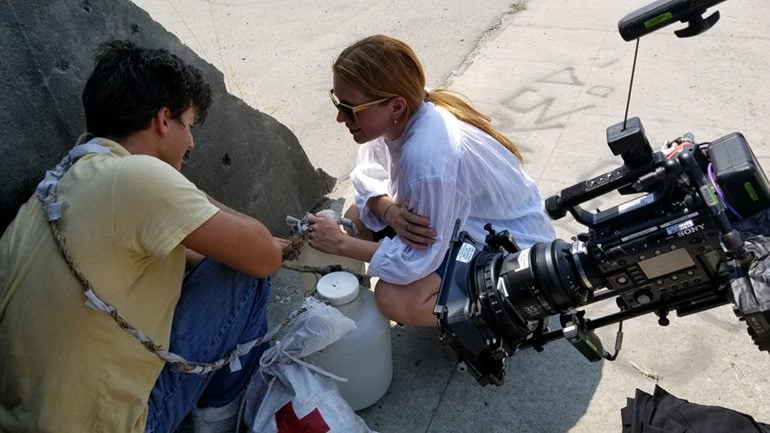
So, there I was, ready to write it, but for various reasons, Radoš was not available to talk to me at that time. After a few attempts to connect, I had to accept I was on my own. It was scary at first – how do I tell someone’s story when I don’t really know it, beyond the basic plot? But then I realized that there were so many other stories from the war that I’ve been collecting over the years, both my own but also those of my other friends, and this was a perfect opportunity to finally tap into this treasure trove of our collective experiences.
What came out of it was a story that, while based on true events, and inspired by a real person who went through them, morphed into a bigger, more universal tale of those of us who survived that war as teenagers, and the scars that experience left on us all.
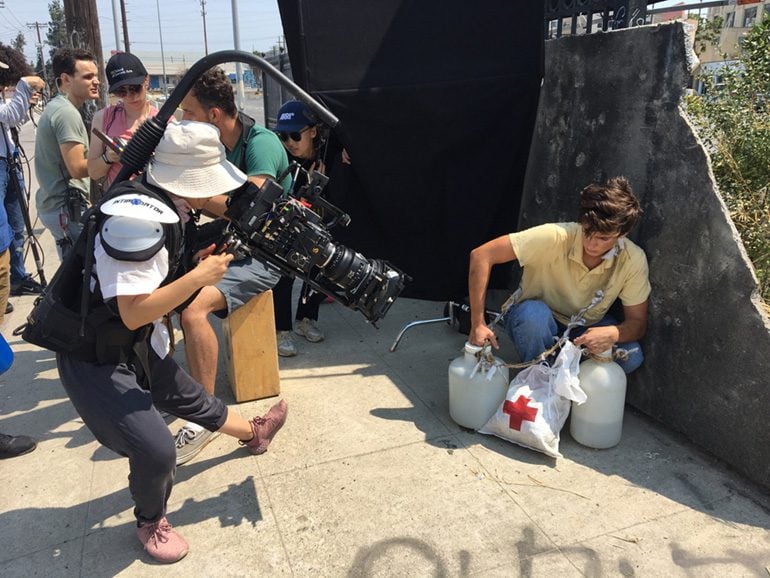
StudentFilmmakers Magazine: What were some important things you learned while directing “Variables”?
Sabina Vajrača: I’d say the biggest lesson I learned was to go with the flow. I had a very different idea of a visual language for the film, for example, but then my Director of Photography, Eugene Koh, pointed out that we were working with a non-actor in the lead role and had to, therefore, be more flexible, giving him the freedom to move in the frame and possibly not hit his marks, while still capturing his performance. So, I threw away my original idea, and we went hand-held instead. We also pre-lit everything, so when we started rolling we could just shoot without much delay, allowing the momentum and the emotions of the scene to stay up throughout.
This was also my first time working with non-actors in main roles, and I had to quickly restructure my way of getting performances out of them. While a trained actor may understand the language we’ve all learned to use when working together, to a kid with no previous exposure to this world, it all sounded like mumbo-jumbo. I am deeply grateful to Haris Turcinhodzic, Ena Catic, and Amila Kapetanovic for being patient with me as I learned to speak their language instead, so we could create Nikola, Ajla, and Senita together. And to all my professional actors on the set who were consistently kind and generous with us as we found our footing.
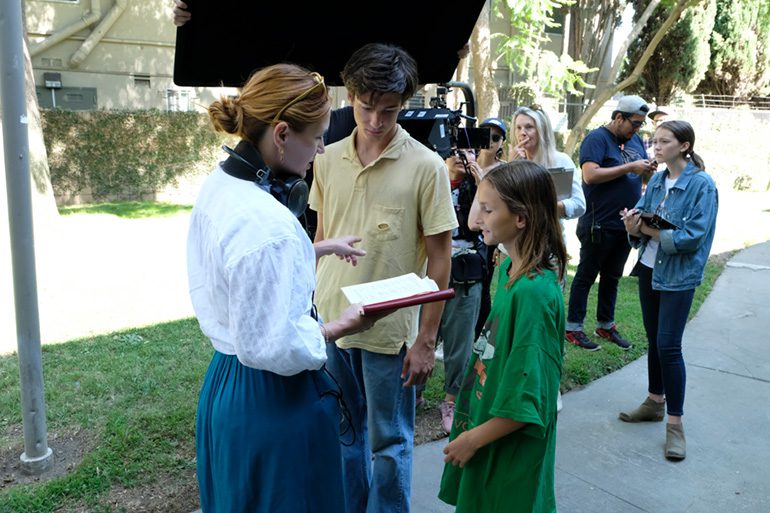
StudentFilmmakers Magazine: What were some of the most challenging problems solved during each of these stages: pre-production, production, and post-production?
Sabina Vajrača: Our first two problems to solve were casting and locations. Since half of the film is set in Bosnia during the war, and 99% of it is spoken in Bosnian, we were faced with a decision: find war-torn locations and Bosnian-speaking actors in the U.S., or fly everyone to Bosnia where (presumably) both of those would be easier to get. The second option was definitely the favorite, but once we took a look at our budget, it became obvious it was impossible to accomplish with the money we had, which left us with option one. And let me tell you, finding Bosnian-speaking kids in the U.S. is hard! Almost as hard as recreating war-torn Bosnia in Los Angeles.
We put the word out in Bosnian communities across America, and after months of interviews, auditions, and asking every Bosnian I met if they had a kid who can speak the language (some awkward, “I promise, I’m not a creep,” conversations there), we found Haris in Florida and flew him out to LA for the shoot. During that whole time, we were also doing extensive location scouts all around LA, managing to find a few spots we felt were good enough for our talented Art Department and VFX artists to believably change into 1990’s Bosnia.
Speaking of the cast, the biggest problem we faced during the production was losing them. As I learned, that’s a risk you take when casting kid non-actors who don’t even live in the town where you’re filming. The original script had three teenagers leaving Bosnia, but literally a night before we were to film our first scene with them, one of the kid’s parents called to say they changed their mind and would not be coming to LA for the shoot after all. No amount of pleading worked, and all attempts by my producers to find a replacement in time failed, leaving me with only one option – rewrite the script. I stayed up that night trying to make it work, and showed up the next morning with new pages, asking my non-actors to memorize them on the spot. Crazy times!
By the time we got to post, we were out of money. As that old saying goes, when it comes to good, fast and cheap, you can have only two out of three, and in this case, we were stuck with “cheap” (or, really, free), and we wanted “good” at all costs, so “fast” was not an option. Consequently, it took us almost a whole year to finish post (asking professional friends for favors means they do them on their time), but in the end, it all worked out. As it usually does.
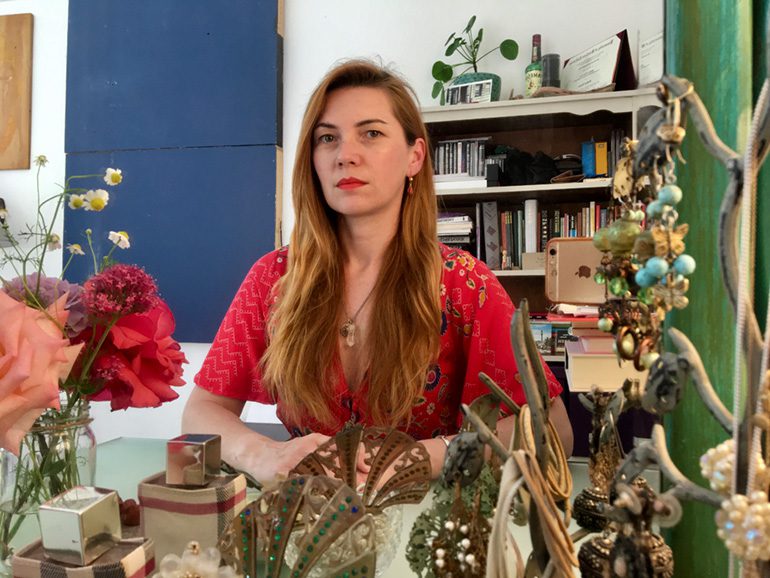
StudentFilmmakers Magazine: If you could share your Top 3 Film Directing Tips for student filmmakers and aspiring film directors, what would they be?
Sabina Vajrača: Oh, this is a tough one because directing, like all art, is very subjective. What works for me may not work for everyone, and vice versa. That said, I’ve found some things really helpful over the years that perhaps some of you might find useful.
Tip #1: If you have a crazy idea you want to try but are too scared to do it, do it anyway. You want to film an action scene lit only in green, with psychedelic music as a score? Sure, why not? Or you’re thinking your favorite TV actor would be great for your student short and wanna send it to their agent? Go for it! I’ve found that, in general, people are more willing to help, and to forgive, someone just starting out, because they think, “Oh, they don’t know any better.” Use that assumption in your favor! Besides, what’s the worst that’s gonna happen? People say no, or they criticize you? That’s gonna happen anyway. And (very) often. Sooner you start getting rejections, sooner you start building the super thick skin you have to have to survive in this business.
Tip #2: When first starting out, it’s a very common thing to consume a lot of other people’s works. You may even have a favorite director and have seen all of her/his films, ten times over. There’s nothing wrong with that, at first. All great artists steal, after all. The trick is to steal it in your own unique way as opposed to mimic what you’ve seen. And that requires you to develop your own voice, which takes a lot of courage on your part. It’s so much easier to take something that’s already been vetted by the world and proclaimed great, and then copy it, than it is to put your own spin on it and see where it lands. Your inner artist is who’s making you take this path, however. Don’t ignore her/him for the sake of a master. Trust that you can become a master, too. So sure, keep watching the greats, but then let yourself take what inspired you about that film and twist it on its head so it’s as unique and special as you.
Tip #3: Which brings me the most important tip I can give you. Live your life! Best stories come out of your own experiences, not from movies (which are just other people’s experiences told well). Go out there. Do stuff. Try stuff. Fall in love. Live through heartbreaks. Experience joy, pain, awe, betrayal, anything that comes, fully and wholeheartedly. Only then will you be able to truly connect to the characters you’re bringing to life, and, more importantly, to the actors you’re working with. In my book that is what directing really is – a thorough knowledge of a human condition, conveyed in a way that resonates with the masses. You can’t do this well until you know what you’re talking about. And that only comes from jumping into the ocean of life head-first and learning how to swim on your own, sharks and all. It’s scary, but fun, I promise. Happy swimming!

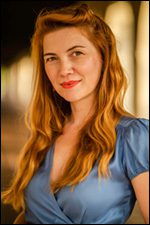 About Sabina Vajrača: Born in Bosnia and Herzegovina, Sabina Vajrača immigrated to the U.S. as a war refugee. She started her professional career in theatre, writing, directing and producing plays at The Lincoln Center, SITI Company, and Shakespeare & Company, amongst others. Her first film – the critically acclaimed feature documentary BACK TO BOSNIA – premiered at the 2005 AFI Fest, screened at over 30 festivals worldwide, winning Director’s Choice at the Crossroads Film Festival, and is featured in the top 100 of the greatest films directed by women by BBC. It’s available on Amazon Prime. Since then, she wrote, directed, and produced a dozen short narrative films; music video for Nouvelle Vague’s BELA LUGOSI’S DEAD; commercials for ESPN and IFP Media Center; and wrote numerous award-winning short and feature screenplays. Her latest short, VARIABLES, won the DGA Student Awards Grand Prize, the Alfred P. Sloan Prize, was a nominee for the HUMANITAS Prize and the Student Oscars, and is currently the 2020 GSA BAFTA Student Film Award finalist. Outside of her own projects, Sabina worked as an assistant to writer/director Max Mayer on his feature drama ADAM, starring Hugh Dancy and Rose Byrne (2009 Sundance); alongside Gregory Crewdson on his photo opus CATHEDRAL OF THE PINES; and she shadowed James Whitmore Jr. on MADAM SECRETARY (CBS) and Sarah Boyd on 9-1-1 (FOX). Sabina is the Annenberg Scholar, a member of Film Fatales, Women in Film, WIMPS, and Free the Work, and an alumna of the Ryan Murphy Half Directing Mentorship, the Nantucket Screenwriters Colony, and the Stowe Story Labs, where she won the Tangerine Entertainment Fellowship. She received her M.F.A. in Film and TV Production from USC School of Cinematic Arts and is repped by Kelsey Roberts at Industry Entertainment. www.sabinavajraca.com
About Sabina Vajrača: Born in Bosnia and Herzegovina, Sabina Vajrača immigrated to the U.S. as a war refugee. She started her professional career in theatre, writing, directing and producing plays at The Lincoln Center, SITI Company, and Shakespeare & Company, amongst others. Her first film – the critically acclaimed feature documentary BACK TO BOSNIA – premiered at the 2005 AFI Fest, screened at over 30 festivals worldwide, winning Director’s Choice at the Crossroads Film Festival, and is featured in the top 100 of the greatest films directed by women by BBC. It’s available on Amazon Prime. Since then, she wrote, directed, and produced a dozen short narrative films; music video for Nouvelle Vague’s BELA LUGOSI’S DEAD; commercials for ESPN and IFP Media Center; and wrote numerous award-winning short and feature screenplays. Her latest short, VARIABLES, won the DGA Student Awards Grand Prize, the Alfred P. Sloan Prize, was a nominee for the HUMANITAS Prize and the Student Oscars, and is currently the 2020 GSA BAFTA Student Film Award finalist. Outside of her own projects, Sabina worked as an assistant to writer/director Max Mayer on his feature drama ADAM, starring Hugh Dancy and Rose Byrne (2009 Sundance); alongside Gregory Crewdson on his photo opus CATHEDRAL OF THE PINES; and she shadowed James Whitmore Jr. on MADAM SECRETARY (CBS) and Sarah Boyd on 9-1-1 (FOX). Sabina is the Annenberg Scholar, a member of Film Fatales, Women in Film, WIMPS, and Free the Work, and an alumna of the Ryan Murphy Half Directing Mentorship, the Nantucket Screenwriters Colony, and the Stowe Story Labs, where she won the Tangerine Entertainment Fellowship. She received her M.F.A. in Film and TV Production from USC School of Cinematic Arts and is repped by Kelsey Roberts at Industry Entertainment. www.sabinavajraca.com
 Exclusive interview conducted by Jody Michelle Solis. Associate Publisher for StudentFilmmakers Magazine (www.studentfilmmakers.com), HD Pro Guide Magazine (www.hdproguide.com), and Sports Video Tech (www.sportsvideotech.com) Magazine.
Exclusive interview conducted by Jody Michelle Solis. Associate Publisher for StudentFilmmakers Magazine (www.studentfilmmakers.com), HD Pro Guide Magazine (www.hdproguide.com), and Sports Video Tech (www.sportsvideotech.com) Magazine. “Lifelines, not deadlines. Motion Arts. Fusion Everything.”
